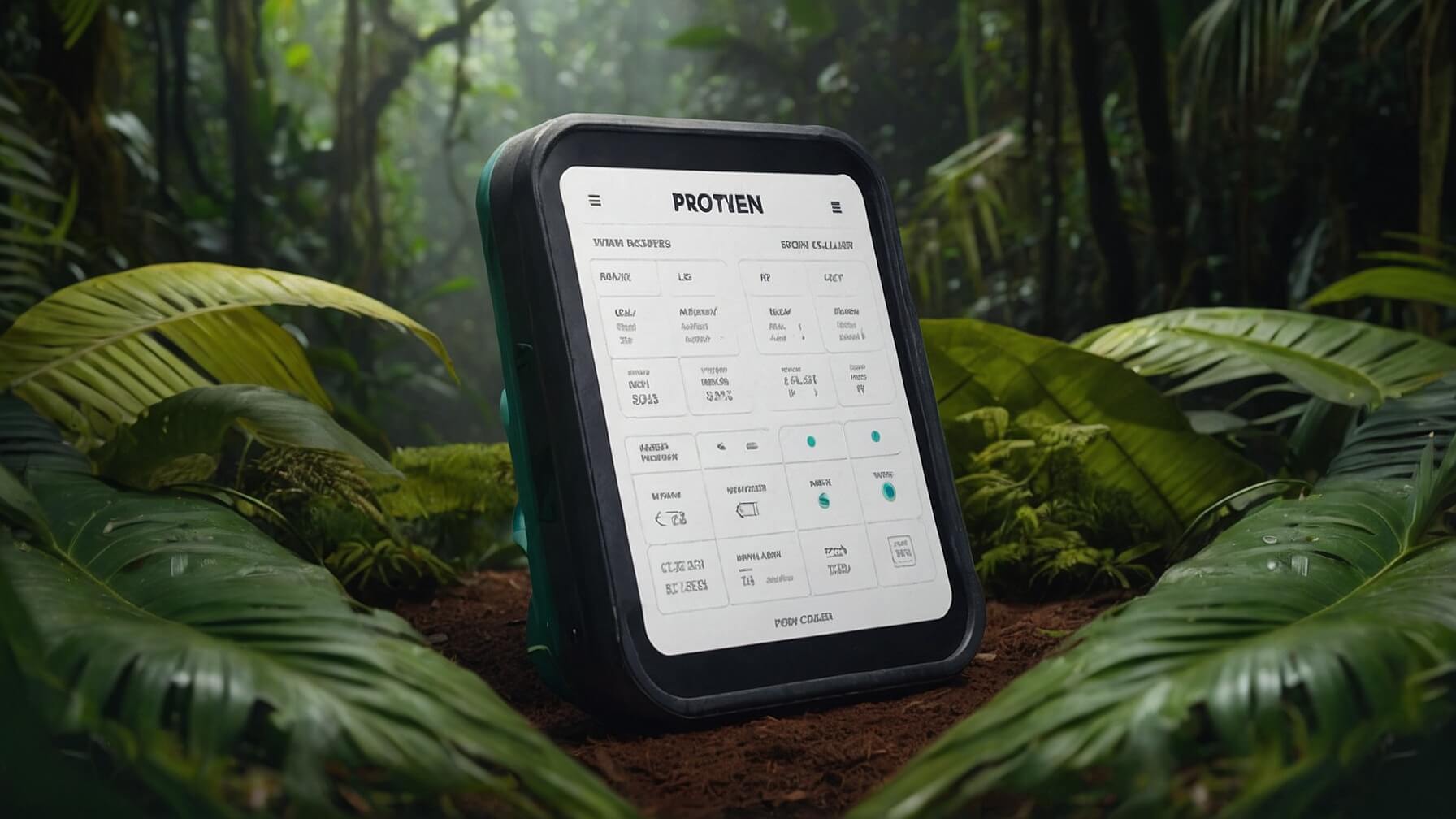Our protein intake calculator is designed to estimate your daily protein needs based on several key parameters including age, gender, weight, height, and activity level. It leverages guidelines and insights from the Centers for Disease Control and Prevention (CDC), which offers research-backed recommendations on nutritional intake for maintaining health and supporting active lifestyles.
Protein Intake Calculator
Interpreting Your Protein Intake Calculator Results
After using our Protein Intake Calculator, you’re presented with tailored results that outline your daily protein intake range. This personalized feedback is pivotal in guiding your dietary choices to align with your health and fitness goals. Here’s how to interpret these results effectively:
Minimum and Maximum Protein Intake: The calculator provides a range to offer flexibility in your diet. The minimum amount ensures you meet essential bodily functions, while the maximum limit is set to prevent potential negative effects from excessive protein consumption. This range supports muscle repair, growth, and overall health without overburdening your kidneys or liver.
Exact Intake Suggestion: For those seeking more precise guidance, our Protein Intake Calculator also suggests an “exact” daily protein target. This figure is calculated to optimize your nutrition based on the personal and activity data you’ve entered. It’s particularly useful for individuals with specific goals, such as muscle gain or fat loss, ensuring you consume an optimal amount of protein to support these objectives.
Understanding these results allows you to tailor your diet more closely to your body’s needs, ensuring you’re not just hitting your protein targets but doing so in a way that complements your overall nutritional strategy. Remember, our Protein Intake Calculator is designed to adapt to your unique lifestyle, making it an indispensable tool for anyone looking to optimize their dietary protein intake.
Why a Protein Intake Range of 10% to 35%?
The range of 10% to 35% you’re seeing in the context of protein intake recommendations refers to the percentage of total daily calories that should come from protein, according to dietary guidelines. This range is part of nutritional advice to ensure a balanced diet that supports various bodily functions, including muscle repair, growth, and overall health.
Here’s a breakdown of what this range means:
-
10% of total daily calories from protein is considered the minimum to meet your basic nutritional needs. It ensures that you’re getting enough protein to support essential bodily functions without necessarily focusing on muscle building or intense physical activity.
-
35% of total daily calories from protein is on the higher end of the spectrum. This level is often recommended for individuals engaged in regular, intense physical activity, including athletes or those looking to build muscle mass or lose weight. Higher protein intake can help with muscle repair and growth, and it has a higher satiety level, which can help with appetite control and weight management.
The Role of Activity Level in Protein Consumption
The protein needs of an individual are significantly influenced by their level of physical activity. Our Protein Intake Calculator takes this into account by adjusting protein recommendations based on whether you’re sedentary, lightly active, moderately active, or very active. Here’s how different levels of activity impact your protein requirements:
- Sedentary Lifestyle: For those with minimal physical activity, protein needs are lower but still crucial for maintaining muscle mass and supporting overall health.
- Light Activity: Engaging in light exercises a few times a week increases your protein requirements slightly to aid in recovery and muscle maintenance.
- Moderate to High Activity: Regular intense workouts significantly raise protein needs. Our calculator suggests increased intake to support muscle repair, recovery, and growth, ensuring that athletes and active individuals receive enough protein to match their exertion levels.
Understanding the correlation between activity levels and protein needs helps tailor your diet more precisely, ensuring optimal nutrition for recovery, performance, and health.
Adjusting Your Diet Based on Calculator Insights
Armed with the insights from our Protein Intake Calculator, you’re well-equipped to make informed adjustments to your diet. Whether you need to increase your protein intake to meet your exact target or adjust your consumption to stay within the recommended range, here are strategies to help you align your diet with your protein goals:
Incorporating a Variety of Protein Sources: Diversify your protein intake by including both animal and plant-based sources. This not only helps you meet your protein targets but also ensures you’re getting a broad spectrum of essential amino acids and other nutrients. Consider lean meats, dairy, legumes, nuts, and seeds as part of your diet.
Timing Your Protein Intake: Distribute your protein intake evenly throughout the day, with a focus on post-workout meals or snacks to aid in muscle recovery. Consuming protein with each meal can also help maintain satiety, which is especially beneficial for weight management.
Leveraging Protein-Rich Snacks: For those needing to increase their protein intake, consider incorporating protein-rich snacks between meals. Greek yogurt, cottage cheese, hard-boiled eggs, or a handful of almonds can be excellent choices to boost your protein consumption.
Monitoring Portion Sizes: While increasing protein, be mindful of portion sizes and the overall balance of your diet. Ensure that you’re also consuming adequate amounts of fruits, vegetables, whole grains, and healthy fats to maintain nutritional balance.
By applying the recommendations from our Protein Intake Calculator, you can fine-tune your diet to better support your health and fitness goals. It’s about creating a balanced approach that considers your protein needs within the context of your total dietary pattern. Stay tuned as we explore how to incorporate complete and incomplete proteins into your diet for maximum health benefits.
Incorporating Complete and Incomplete Proteins
Understanding the distinction between complete and incomplete proteins is crucial for optimizing your diet with the insights from our Protein Intake Calculator. Complete proteins contain all nine essential amino acids necessary for your body’s functions, typically found in animal products and a few plant sources. In contrast, incomplete proteins, often found in plant-based foods, lack one or more of these amino acids. Here’s how to use the calculator’s results to ensure a balanced intake:
Balancing Your Protein Sources: Aim to include a mix of complete and incomplete proteins in your diet. For non-vegetarians, this might mean balancing meat, fish, and dairy with plant-based sources like legumes and grains. Vegetarians and vegans can combine different plant-based proteins, such as rice and beans or hummus and whole grain bread, to create complete proteins.
Exploring Plant-Based Combinations: For those following a plant-based diet, focusing on combining incomplete proteins is key to ensuring you get all essential amino acids. Our Protein Intake Calculator can guide vegans and vegetarians on how much protein to aim for, making it easier to plan meals that meet these needs.
Adjusting for Dietary Restrictions: If you have dietary restrictions that limit your intake of certain protein sources, our Protein Intake Calculator can help you identify how much protein you need from alternative sources. This ensures that regardless of restrictions, you’re still able to meet your body’s protein requirements effectively.
Diverse Sources of Protein for a Balanced Diet
Navigating the vast array of dietary choices to fulfill protein needs can be a journey of discovery and balance. While meat and dairy traditionally form the cornerstone of protein intake for many, the landscape of nutrition offers a rich tapestry of sources catering to various dietary preferences and restrictions. Achieving the Recommended Dietary Allowance (RDA) for protein is indeed more straightforward with meat and dairy due to their higher protein content per serving. However, reliance on these sources alone can lead to potential health drawbacks. Embracing a variety of protein sources, including plant-based options, not only meets the RDA but also enriches the diet with a spectrum of essential nutrients.
Emphasizing Complete Proteins
Incorporating complete proteins, which harbor all nine essential amino acids necessary for human health, is advisable. These amino acids are pivotal as the body cannot synthesize them independently. Here are some exemplary sources of complete proteins across different dietary spectrums:
Meat and Dairy Selections
- Eggs: A versatile and rich source of high-quality protein.
- Chicken Breast: Lean and packed with protein.
- Cottage Cheese: Low in fat and high in casein, a slow-digesting dairy protein.
- Greek Yogurt: Combines high protein content with probiotics for gut health.
- Milk: A foundational source of calcium and protein.
- Lean Beef: Offers iron in addition to protein.
- Tuna: A seafood option rich in omega-3 fatty acids and protein.
- Turkey Breast: Another lean meat option.
- Fish and Shrimp: Seafood varieties offering protein and essential fatty acids.
Plant-Based and Vegan Alternatives
- Buckwheat: Not just a grain substitute but a complete protein.
- Hummus and Pita: A combination that forms a complete protein.
- Soy Products: Including tofu, tempeh, and edamame, rich in protein and versatile in recipes.
- Peanut Butter on Whole Grain Bread: A simple yet effective protein pairing.
- Beans and Rice: A classic combination that ensures a complete amino acid profile.
- Quinoa: A grain that is also a complete protein.
- Hemp and Chia Seeds: Small but mighty sources of protein.
- Spirulina: A nutrient-dense algae with a high protein content.
Exploring Incomplete Proteins
While certain foods may not offer a complete protein profile on their own, they remain invaluable components of a nutritious diet. Consuming a varied diet ensures that even incomplete proteins can collectively satisfy amino acid requirements. Examples include:
- Almonds and Oats: Great for breakfast or snacks.
- Broccoli and Lentils: Nutrient-packed choices for meals.
- Ezekiel Bread and Chia Seeds: Fiber-rich and nutritious.
- Pumpkin Seeds and Peanuts: Snackable yet protein-rich.
- Brussels Sprouts, Grapefruit, and Green Peas: Unique sources of proteins.
- Avocados and Mushrooms: Offer more than just protein with their rich nutrient profiles.
Beyond Protein: A Balanced Approach to Nutrition
While our Protein Intake Calculator focuses on optimizing protein consumption, it’s essential to remember the importance of a balanced diet. Protein intake should not overshadow the need for other nutrients, including carbohydrates, fats, vitamins, and minerals, which play crucial roles in your body’s function and health.
- Carbohydrates and Fats: These macronutrients are vital for energy, brain function, and overall health. Including a variety of sources, such as whole grains, fruits, vegetables, and healthy fats, ensures a well-rounded diet.
- Vitamins and Minerals: Micronutrients support immune function, bone health, and more. A diverse diet rich in fruits, vegetables, nuts, seeds, and lean proteins can provide these essential nutrients.
- Hydration: Adequate water intake is crucial for digestion, nutrient absorption, and muscle function. It’s an often-overlooked aspect of nutrition that complements your protein intake and overall diet.
By considering these nutritional components alongside the recommendations from our Protein Intake Calculator, you can create a comprehensive dietary plan that supports all aspects of your health and well-being.
Conclusion: Making the Most of Our Protein Intake Calculator
Our Protein Intake Calculator is more than just a tool; it’s a step towards a healthier, more balanced diet. By understanding and applying the insights it provides, you can ensure your protein intake supports your lifestyle, activity level, and dietary goals. Remember, the key to a healthy diet is balance and variety, and protein intake is just one piece of the puzzle.
Embrace the flexibility and guidance our calculator offers, and let it help you navigate your nutritional journey. Whether you’re adjusting your diet for health, fitness, or personal reasons, our Protein Intake Calculator is here to support you every step of the way. Stay informed, stay healthy, and let our tool empower you to make the best dietary choices for your unique needs.

